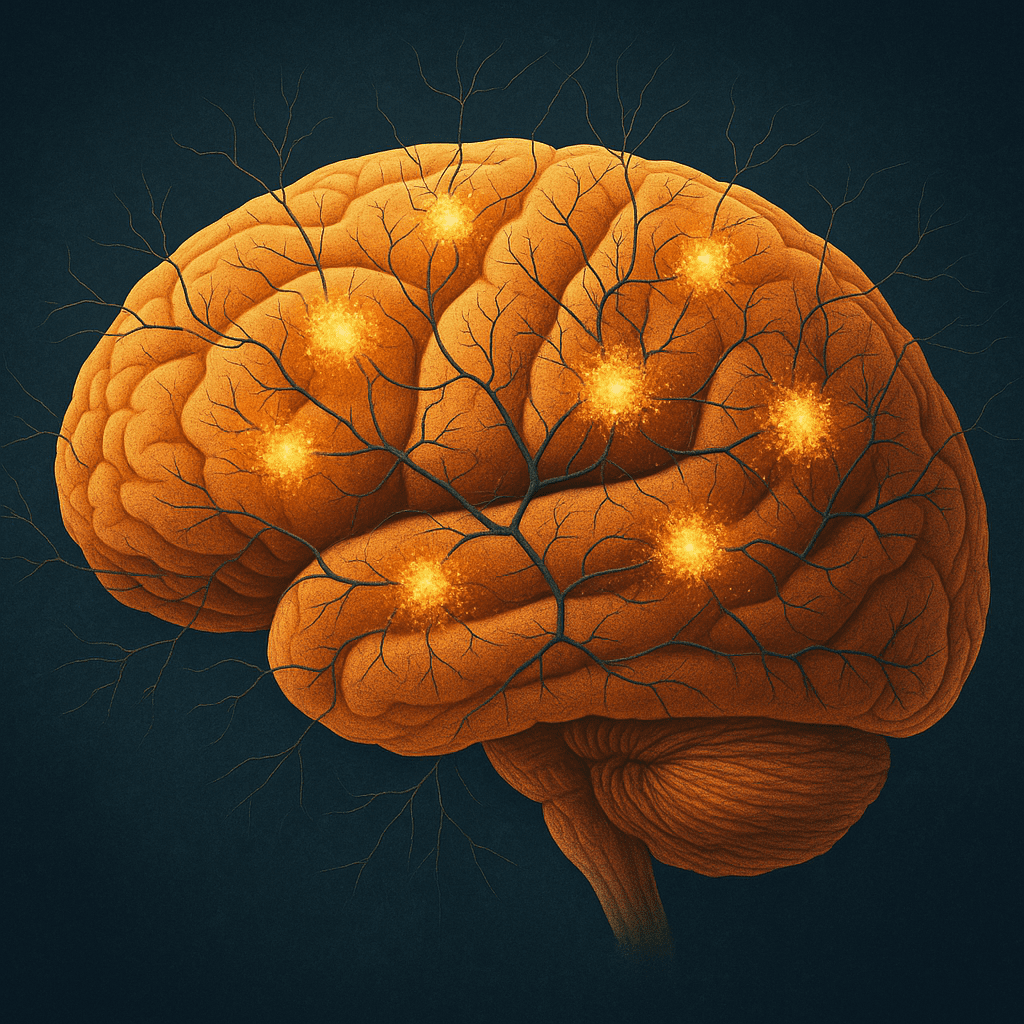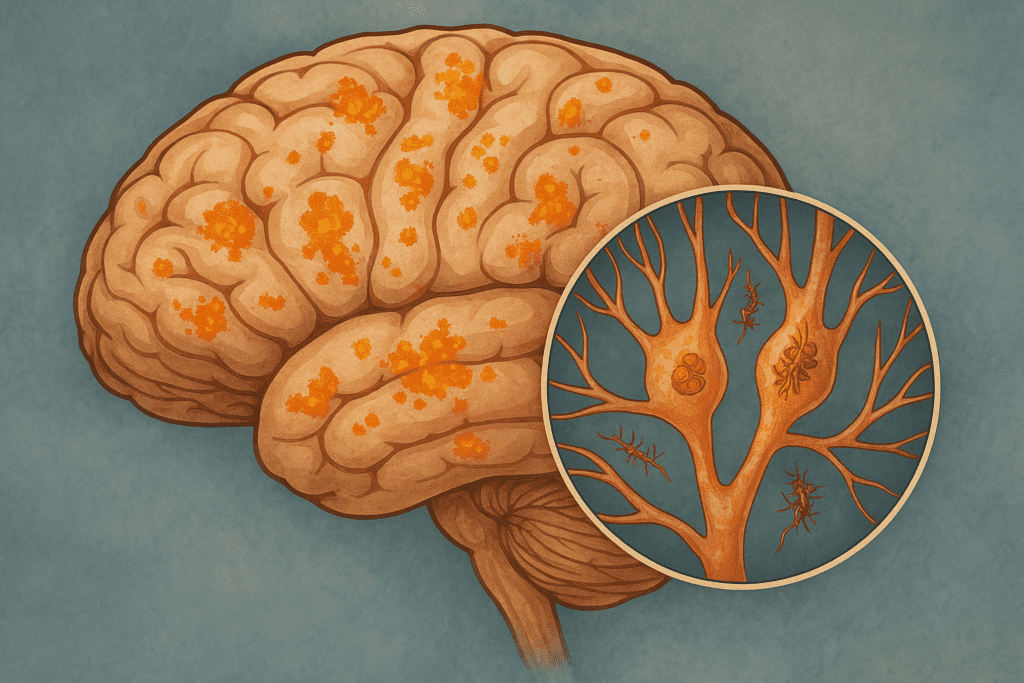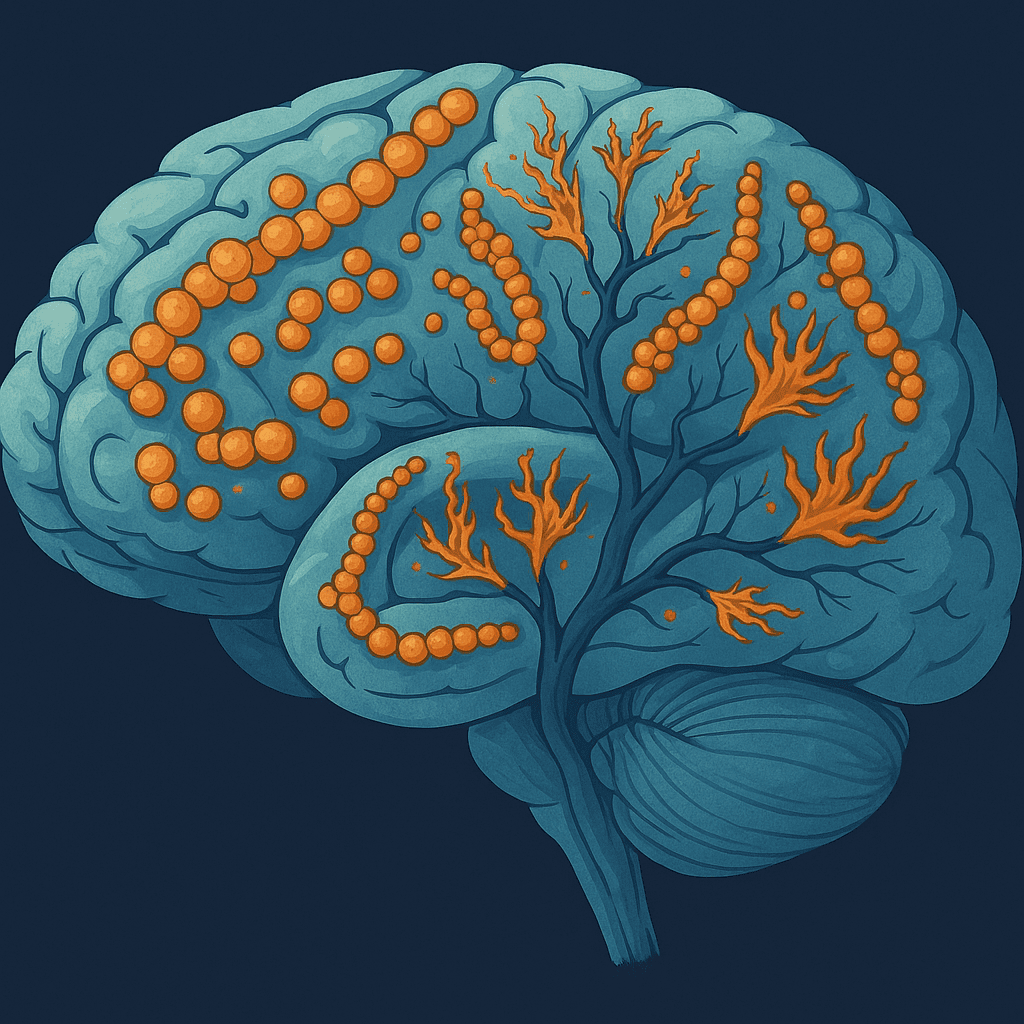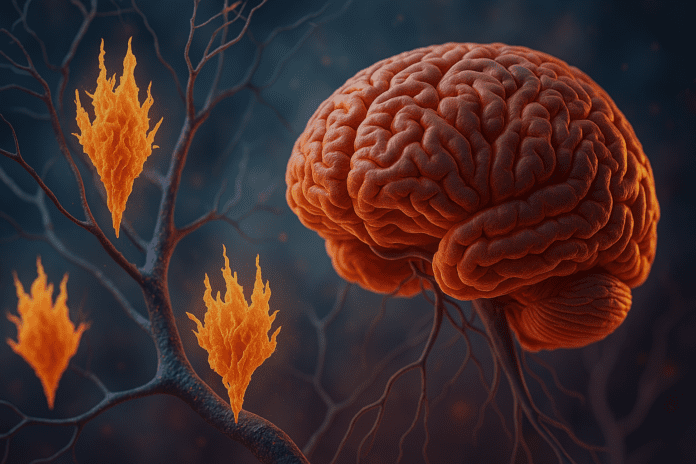The human brain, a marvel of evolution and complexity, depends on intricate cellular structures and biochemical signaling to maintain cognitive function. Among the many components that support healthy brain activity, tau protein plays a crucial role. While tau protein is vital for stabilizing microtubules within neurons, emerging research has identified its darker side when misfolded or hyperphosphorylated. In the context of Alzheimer’s disease, tau protein abnormalities are intimately associated with neurodegeneration and memory loss. As experts in neuroscience and neurology continue to explore the underlying mechanisms of cognitive decline, the role of tau protein in brain health and disease is becoming increasingly clear.
Understanding the fundamental biology of tau, its pathological forms, and how it may propagate through the brain has given rise to new hypotheses about Alzheimer’s progression. Historically, the accumulation of amyloid-beta plaques received the bulk of attention in Alzheimer’s research. However, recent findings have positioned tau as a more direct correlate of cognitive symptoms, offering a fresh lens through which to understand and potentially treat this devastating condition. Exploring the dynamics of tau protein in brain aging and neurodegeneration could pave the way for better diagnostic tools, more targeted therapies, and new hope for those living with Alzheimer’s disease.
You may also like: How to Prevent Dementia and Alzheimer’s Disease Naturally: Expert-Backed Strategies to Reduce Your Risk Through Lifestyle and Diet
The Physiological Role of Tau Protein in Brain Function
In a healthy brain, tau protein serves a vital structural function. It belongs to a class of proteins known as microtubule-associated proteins (MAPs), and its principal role is to stabilize microtubules in neurons. Microtubules are part of the cell’s cytoskeleton, acting like highways that transport nutrients, organelles, and signaling molecules throughout the neuron. Tau binds along these microtubules, supporting their integrity and ensuring efficient intracellular communication.
This structural support is especially important in long axons, where materials must travel significant distances from the cell body to the synapse. Proper functioning of these pathways is critical for synaptic plasticity, neurotransmitter release, and ultimately for processes like memory formation and retrieval. In this sense, tau protein in the brain is foundational to cognitive performance and neural resilience.
Notably, tau is subject to phosphorylation, a process where phosphate groups are added to its structure, enabling tight regulation of its activity. Under normal conditions, tau phosphorylation is reversible and finely tuned. It allows the protein to detach and reattach to microtubules as needed, accommodating the cell’s shifting demands. When this balance is disrupted, however, tau can become a destabilizing force.
Pathological Transformation: From Physiological Tau to Toxic Aggregates
The tipping point for tau protein in Alzheimer’s occurs when it becomes hyperphosphorylated. In this altered state, tau no longer binds effectively to microtubules, causing them to disassemble. The freed tau proteins begin to misfold and clump together, forming structures known as neurofibrillary tangles (NFTs). These tangles, a hallmark of Alzheimer’s pathology, disrupt cellular function and ultimately contribute to neuronal death.
This process transforms a once-helpful molecule into a neurotoxic agent. Research shows that the accumulation of tau tangles correlates more closely with cognitive decline than the presence of amyloid-beta plaques. As these tangles spread through the cortex, they compromise memory, executive function, and overall cognitive ability. The specific regions affected can vary between individuals, but the hippocampus – the brain’s memory center – is typically among the first to suffer damage.
Importantly, tau pathology appears to progress in a staged manner. According to Braak staging, which maps the spatial progression of NFTs, the spread of abnormal tau follows a predictable pattern from the entorhinal cortex to other cortical areas. This topography aligns closely with symptom onset and severity, suggesting that tau brain involvement is central to Alzheimer’s progression.
The Alzheimer Tau Protein Area of Brain: Vulnerable Regions and Clinical Correlates
The distribution of tau pathology in Alzheimer’s disease provides key insights into its clinical manifestations. The earliest Alzheimer tau protein area of brain involvement occurs in the entorhinal cortex and hippocampus, both of which are central to memory encoding and spatial navigation. As tau pathology intensifies and spreads to the neocortex, patients begin to exhibit language difficulties, impaired judgment, and disruptions in executive function.
The progression of tau pathology does not occur randomly. Neuroanatomical studies have shown that certain regions are more vulnerable than others, possibly due to their high metabolic demand or complex synaptic architecture. The posterior cingulate cortex, inferior parietal lobule, and prefrontal cortex are all regions frequently impacted in moderate to advanced stages of Alzheimer’s. As tau invades these areas, the constellation of cognitive symptoms broadens, mirroring the decline in everyday functioning.
Advanced imaging techniques, such as positron emission tomography (PET) using tau-specific tracers, have made it possible to visualize tau burden in living individuals. These imaging biomarkers offer powerful tools for tracking disease progression and assessing the effectiveness of therapeutic interventions. In clinical trials, measuring tau protein in brain regions affected by Alzheimer’s can serve as a surrogate marker for treatment response, enhancing precision medicine approaches to neurodegenerative care.

Do Tau Tangles Happen Outside of the Brain?
While tau tangles are primarily studied in the context of the central nervous system, researchers have begun to explore whether they can occur outside the brain. This question opens intriguing possibilities for early diagnosis and systemic intervention. Some studies have identified tau protein aggregates in peripheral tissues, including the retina, cerebrospinal fluid, and even skeletal muscle, raising the prospect that Alzheimer’s pathology might not be confined to the brain alone.
The detection of tau in blood and cerebrospinal fluid has received considerable attention, particularly for its potential as a biomarker. Blood-based assays that measure phosphorylated tau isoforms are being developed and validated, with some showing promise for distinguishing Alzheimer’s from other types of dementia. If tau pathology extends beyond the brain, these peripheral markers could provide a less invasive, earlier window into disease progression.
There is also ongoing research into whether systemic inflammation or metabolic dysfunction might influence tau aggregation both in and outside of the central nervous system. While the exact mechanisms remain under investigation, these findings suggest that the reach of tau protein in Alzheimer’s may be more expansive than previously believed. Still, more research is needed to determine whether these extraneural tau aggregates contribute to disease pathology or merely reflect central nervous system changes.
Mechanisms Behind Tau Spread and Propagation in the Brain
One of the most compelling developments in recent years is the recognition that tau can propagate from cell to cell, spreading pathology in a prion-like fashion. This hypothesis suggests that misfolded tau can be transmitted from one neuron to another, inducing misfolding in otherwise healthy tau proteins. This chain reaction mirrors the behavior of infectious proteins seen in prion diseases, though tau itself is not infectious in the conventional sense.
The mechanism of tau propagation involves exosomes and other extracellular vesicles, which ferry misfolded tau across synaptic gaps. These vesicles act like Trojan horses, stealthily delivering toxic cargo to neighboring cells. Once inside, the pathological tau seeds further aggregation, perpetuating the cycle. Understanding this mechanism is critical for developing therapeutic strategies aimed at halting the spread of tau pathology.
Animal models have provided compelling evidence for this transmission process. Injecting misfolded tau into specific brain regions in rodents leads to widespread tau pathology in anatomically connected areas. This supports the idea that tau brain spread follows functional neural networks, rather than random diffusion. Targeting the molecules and pathways that facilitate tau transmission could represent a new frontier in Alzheimer’s treatment.
The Role of Inflammation and Immune Dysregulation in Tau Pathology
Neuroinflammation is an increasingly recognized contributor to tau pathology. Microglia, the brain’s resident immune cells, become activated in response to misfolded proteins, including tau. While initially protective, chronic activation can exacerbate damage, releasing pro-inflammatory cytokines and oxidative stressors that promote further tau phosphorylation and aggregation.
Emerging research suggests a bidirectional relationship between inflammation and tau. Inflammatory mediators not only promote tau pathology, but tau aggregates themselves can activate microglia, perpetuating a cycle of damage. This feedback loop is particularly pronounced in aging brains, where immune regulation is already compromised. Understanding this interplay may be key to breaking the cycle and developing more effective therapies.
Genetic factors also modulate the inflammatory response to tau. Variants in genes such as TREM2, which influence microglial function, have been associated with increased Alzheimer’s risk and tau burden. This adds another layer of complexity to the disease and highlights the importance of personalized approaches to prevention and treatment.
Targeting Tau in Alzheimer’s Therapy: Current Approaches and Future Directions
Given the centrality of tau in Alzheimer’s disease, therapeutic strategies aimed at reducing its pathological forms are under intense investigation. Several approaches have entered clinical trials, each targeting a different aspect of tau biology. These include tau aggregation inhibitors, kinase inhibitors to reduce phosphorylation, immunotherapies targeting pathological tau, and antisense oligonucleotides to reduce tau expression.
Immunotherapy has garnered particular interest. Passive immunization with monoclonal antibodies aims to neutralize extracellular tau and prevent its spread. Active vaccines that stimulate the body’s immune system to recognize and clear tau are also being developed. Early-phase trials have shown promise, though challenges remain in achieving sufficient brain penetration and avoiding adverse immune responses.
Gene therapy approaches represent a cutting-edge frontier. Antisense oligonucleotides, which bind to tau mRNA and prevent its translation, have demonstrated efficacy in preclinical models and are now being evaluated in human trials. These interventions offer the potential to halt disease progression at its molecular root, before irreversible damage occurs.
Importantly, combination therapies that target both amyloid-beta and tau may offer synergistic benefits. Given the interplay between these two pathologies, a dual-pronged approach may be necessary to achieve meaningful clinical improvements. As our understanding of tau protein in brain disease deepens, so too does our capacity to design more effective interventions.
Rethinking Alzheimer’s: Tau as a Biomarker and Diagnostic Tool
The identification of tau as a key driver of cognitive decline has important implications for diagnosis. Traditional diagnostic criteria relied heavily on clinical presentation and amyloid imaging. However, tau PET imaging and fluid biomarkers are shifting the paradigm, allowing for earlier and more accurate detection of Alzheimer’s disease.
Phosphorylated tau levels in cerebrospinal fluid (CSF) are among the most reliable biomarkers for distinguishing Alzheimer’s from other neurodegenerative conditions. Elevated levels of tau in CSF correlate strongly with disease severity and progression. More recently, blood-based assays have emerged, offering a less invasive and more scalable diagnostic option.
This shift toward tau-based diagnostics may enable preclinical detection – identifying individuals at risk before symptoms emerge. Such early intervention could transform the trajectory of Alzheimer’s disease, making it more manageable or even preventable. As precision medicine advances, tau biomarkers will likely play a central role in guiding treatment decisions and monitoring therapeutic efficacy.
The Broader Implications of Tau in Alzheimer and Cognitive Decline
While Alzheimer’s is the most well-known tauopathy, it is not the only condition characterized by tau pathology. Frontotemporal dementia (FTD), chronic traumatic encephalopathy (CTE), and progressive supranuclear palsy (PSP) also involve abnormal tau accumulation. This underscores the broader relevance of tau brain dysfunction in neurodegenerative disease.
The presence of tau pathology in multiple disorders suggests shared mechanisms and potential overlapping treatments. Studying these diseases in parallel can yield insights into common vulnerabilities and therapeutic targets. For example, traumatic brain injury, a known risk factor for CTE, may accelerate tau phosphorylation through inflammatory and metabolic pathways also implicated in Alzheimer’s.
Furthermore, lifestyle factors such as sleep, diet, and physical activity may influence tau dynamics. Sleep deprivation has been shown to increase extracellular tau levels, while exercise and certain dietary patterns may have protective effects. Integrating lifestyle modifications with medical interventions could offer a holistic strategy for maintaining cognitive health and delaying the onset of neurodegenerative diseases.

Frequently Asked Questions: How Tau Protein in the Brain May Influence Alzheimer’s
1. Can lifestyle interventions impact the effects of tau protein in Alzheimer’s disease?
Absolutely. While genetic predisposition and aging are major risk factors, lifestyle factors play a crucial role in influencing the expression and progression of tau-related pathology. Research suggests that regular aerobic exercise may reduce tau protein in brain regions vulnerable to Alzheimer’s. Sleep quality also matters; chronic sleep deprivation has been linked to increased levels of extracellular tau. Furthermore, diets rich in omega-3 fatty acids and antioxidants may attenuate neuroinflammation and potentially curb the hyperphosphorylation of tau in Alzheimer. These strategies may not reverse damage but could slow disease progression by targeting underlying mechanisms.
2. How early can tau brain abnormalities be detected in asymptomatic individuals?
With the advent of highly sensitive imaging techniques and blood-based biomarkers, it is now possible to detect abnormal tau protein in brain tissue even before cognitive symptoms appear. Studies on individuals with a family history of Alzheimer’s have revealed subtle changes in tau patterns decades prior to clinical diagnosis. This early detection opens the door for preventive interventions, especially in high-risk populations. Tracking tau in Alzheimer at the preclinical stage is a promising area of research for slowing or halting disease progression. Monitoring the Alzheimer tau protein area of brain involvement through these novel technologies could lead to more targeted early treatments.
3. Are there unique differences in tau pathology between Alzheimer’s and other tauopathies?
Yes, distinct biochemical and structural differences in tau aggregates exist among tauopathies. For example, the tau protein in brain tissue from individuals with Alzheimer’s forms paired helical filaments, while in progressive supranuclear palsy, straight filaments are more typical. These variations influence how the disease presents and progresses. Additionally, Alzheimer protein tau often accumulates in the hippocampus and neocortex, whereas other tauopathies may target the basal ganglia or brainstem more directly. Recognizing these patterns helps clinicians differentiate Alzheimer’s from other neurodegenerative disorders and personalize care strategies accordingly.
4. Do tau tangles happen outside of the brain in other tissues or systems?
Interestingly, mounting evidence suggests that tau aggregates may appear outside the brain under certain conditions. For instance, researchers have detected tau protein in the retina, which could offer a non-invasive diagnostic window into brain health. Moreover, preliminary studies show that Alzheimer protein tau may be found in peripheral blood cells and cerebrospinal fluid, supporting the potential for blood-based diagnostics. While the implications are still being explored, these findings challenge the long-held belief that tau pathology is exclusively neurological. As such, addressing whether do tau tangles happen outside of the brain is central to expanding our understanding of systemic biomarkers and early intervention possibilities.
5. How does tau protein contribute to cognitive reserve and resilience in some individuals?
Some individuals with substantial tau brain pathology maintain normal cognition, suggesting that cognitive reserve—the brain’s ability to compensate for damage—plays a protective role. Education level, intellectual engagement, and social connectedness are all linked to greater cognitive reserve. These factors may mitigate the clinical expression of tau in Alzheimer even when physical brain changes are extensive. Additionally, structural brain differences like increased synaptic density could buffer the effects of tau protein in brain degeneration. These insights underscore the importance of lifelong mental stimulation and social activity as part of an Alzheimer prevention strategy.
6. Are there gender differences in how tau protein affects Alzheimer’s progression?
Emerging research indicates that women may be disproportionately affected by tau-related pathology. Estrogen appears to influence tau phosphorylation, and hormonal fluctuations post-menopause might exacerbate tau accumulation. Studies show that the Alzheimer tau protein area of brain damage in women may be more widespread compared to men at similar disease stages. Genetic factors, including APOE ε4 status, may also interact differently with tau in Alzheimer across sexes. These findings highlight the need for gender-specific approaches to prevention and treatment.
7. How are new imaging technologies changing the way we view tau protein in brain diseases?
Positron emission tomography (PET) scans using tau-specific tracers have revolutionized our ability to visualize tau brain accumulation in living patients. Unlike postmortem analyses, these scans enable real-time monitoring of tau distribution and its relationship to symptoms. Researchers can now observe the Alzheimer’s tau protein area of brain spread longitudinally, tracking how tau moves through neural networks. Coupled with functional MRI, these tools reveal how tau disrupts connectivity in critical brain circuits. This enhanced visibility not only aids diagnosis but also accelerates the development and assessment of targeted therapies.
8. Could tau be used as a predictive marker for Alzheimer’s progression?
Yes, tau is increasingly viewed as a dynamic biomarker that reflects disease activity and predicts future decline. While amyloid plaques may appear years before symptoms, changes in tau protein in brain regions more closely align with cognitive deterioration. Blood and cerebrospinal fluid assays measuring phosphorylated tau can predict conversion from mild cognitive impairment to full-blown Alzheimer’s with remarkable accuracy. Understanding tau brain dynamics helps clinicians forecast individual disease trajectories and tailor interventions accordingly. This positions tau in Alzheimer as both a biological hallmark and a prognostic indicator.
9. What environmental or occupational exposures might influence tau pathology?
Chronic exposure to certain toxins, such as heavy metals and pesticides, has been linked to increased risk of neurodegenerative diseases involving tau protein in brain cells. Repeated head trauma, often seen in contact sports and military service, is strongly associated with tau accumulation, particularly in chronic traumatic encephalopathy (CTE). In such cases, tau in Alzheimer-like patterns can emerge even in younger individuals. Emerging evidence also implicates air pollution in accelerating tau brain deposition and cognitive decline. These findings emphasize the importance of environmental health in mitigating the risk of tau-mediated brain disorders.
10. What does the future hold for therapies targeting tau in Alzheimer’s?
Therapies targeting tau are at the forefront of Alzheimer’s research and hold great promise. Monoclonal antibodies that bind pathological tau and prevent its spread are being tested in late-phase clinical trials. Small molecules that inhibit tau aggregation or modify its phosphorylation patterns are also in development. Innovative techniques such as gene editing and antisense oligonucleotides aim to reduce production of harmful tau isoforms. As our understanding of the tau protein in brain pathology grows, these targeted treatments may become essential components of a multifaceted Alzheimer strategy. Ultimately, the goal is not just to manage symptoms but to intervene at the molecular root of the disease.

Conclusion: Understanding Tau Protein in Brain Aging and the Path to Better Alzheimer’s Treatments
The growing body of research on tau protein in the brain has reshaped our understanding of Alzheimer’s disease. No longer viewed solely as a structural component, tau is now recognized as a central player in cognitive decline and neurodegeneration. The formation of neurofibrillary tangles, particularly in the early Alzheimer tau protein area of brain involvement, correlates strongly with symptom severity and disease progression. This has elevated tau from a pathological bystander to a key therapeutic target.
Exploring questions such as “do tau tangles happen outside of the brain” has broadened the scope of Alzheimer’s research, hinting at systemic contributions to what was once seen as a purely cerebral disease. Advances in tau PET imaging and fluid biomarkers have enhanced diagnostic precision, while novel therapies targeting tau protein in brain regions associated with Alzheimer’s promise to revolutionize treatment.
As scientists continue to investigate tau brain pathways, a more nuanced picture of Alzheimer’s is emerging – one that integrates genetics, inflammation, lifestyle, and molecular pathology. This holistic perspective is essential for developing interventions that not only slow disease progression but also preserve quality of life. By deepening our understanding of tau in Alzheimer, we take a significant step toward unraveling one of medicine’s greatest mysteries and offering renewed hope to millions of individuals and families impacted by cognitive decline.
neurodegenerative diseases, cognitive decline prevention, brain inflammation and aging, early signs of dementia, neurofibrillary tangles, brain imaging for memory loss, tau pathology progression, brain health supplements, mental clarity and aging, hippocampus function and memory, aging brain research, mild cognitive impairment treatment, neurological biomarkers, PET scans for Alzheimer’s, tau-based diagnostics, memory loss risk factors, gender differences in dementia, brain resilience and cognition, synaptic health in aging, brain structure deterioration
Further Reading:
The Role of Tau in Alzheimer’s Disease and Related Disorders
Tau Protein and Alzheimer’s Disease: What’s the Connection?
Nanotechnology for tau pathology in Alzheimer’s disease
Disclaimer
The information contained in this article is provided for general informational purposes only and is not intended to serve as medical, legal, or professional advice. While Health11News strives to present accurate, up-to-date, and reliable content, no warranty or guarantee, expressed or implied, is made regarding the completeness, accuracy, or adequacy of the information provided. Readers are strongly advised to seek the guidance of a qualified healthcare provider or other relevant professionals before acting on any information contained in this article. Health11News, its authors, editors, and contributors expressly disclaim any liability for any damages, losses, or consequences arising directly or indirectly from the use, interpretation, or reliance on any information presented herein. The views and opinions expressed in this article are those of the author(s) and do not necessarily reflect the official policies or positions of Health11News.


